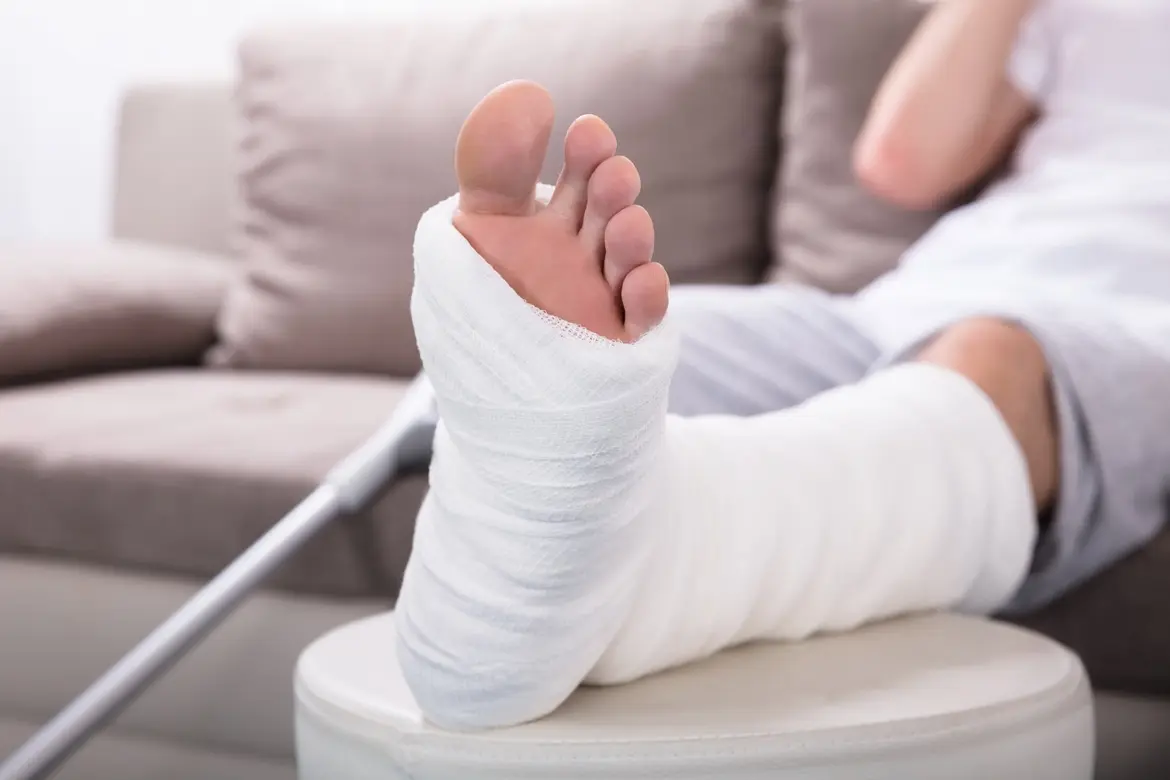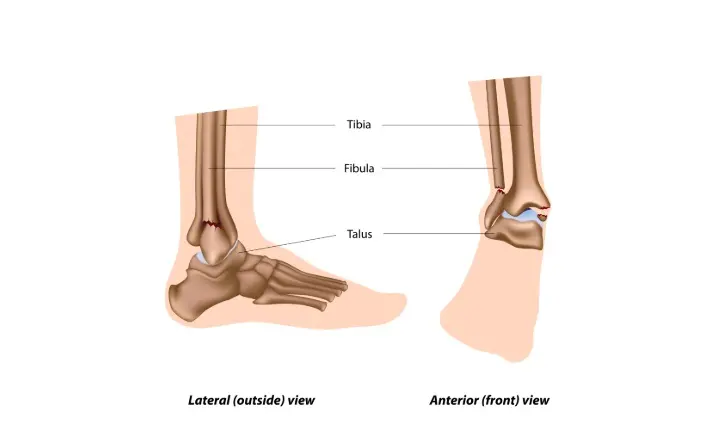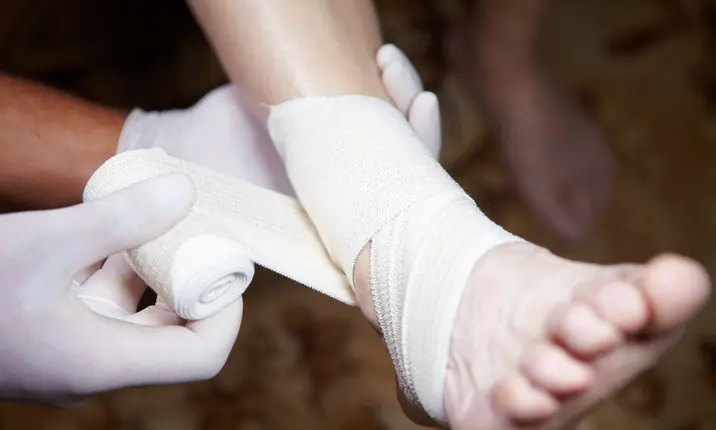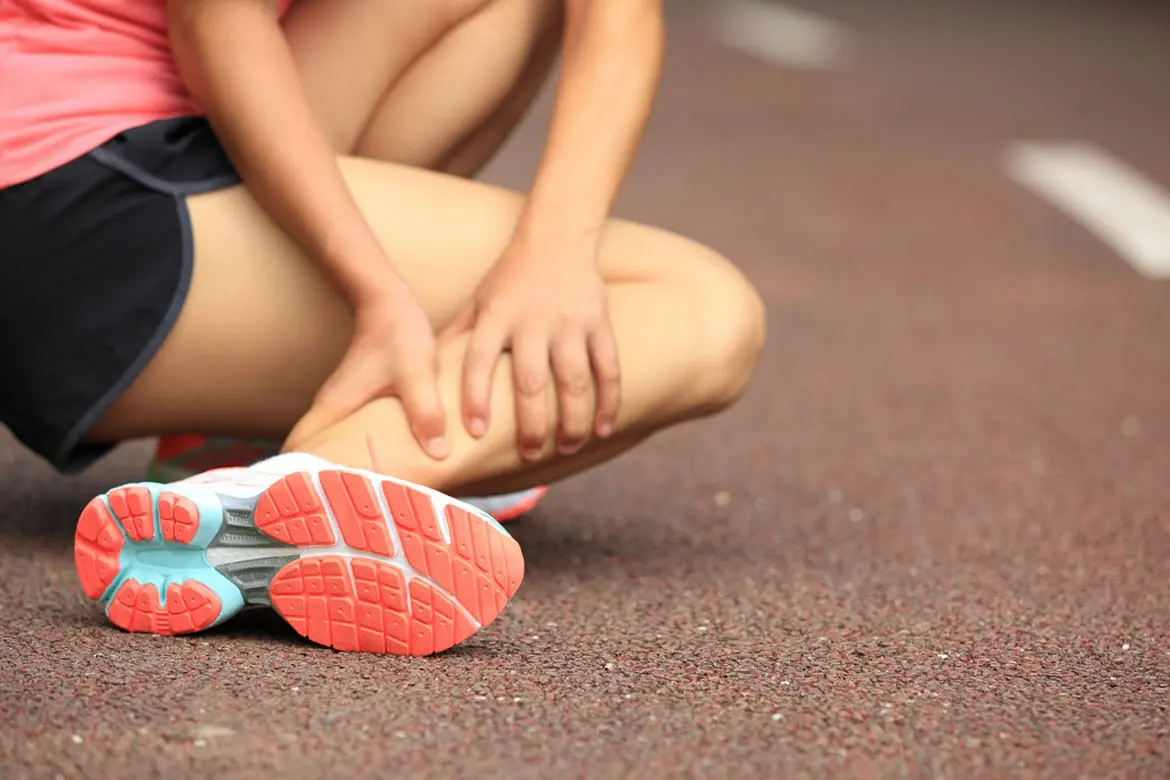The World Health Organisation reports 37.3 million falls that are severe enough to require medical attention occur each year. If your family member falls, do you know what to do?
Before anything else, if someone falls and is severely injured, or exhibiting any of the following warning signs, call for an ambulance immediately:
- Uncontrolled bleeding
- Protruding bone
- Unconscious or unresponsive
- Pale, cold or numb foot or ankle
- Shallow breathing, faintness or dizziness
Anatomy of the foot and ankle
Your ankle is a joint where 3 bones meet. These bones, the tibia and fibula in your leg, and the talus in your foot, are encased at the point where they meet by a joint capsule. The synovial fluid inside this capsule helps the joint to glide smoothly when you move. Several ligaments help to stabilise the ankle. Your foot is made up of 26 bones that tend to be categorised into 3 areas: the forefoot, with your toes and metatarsals, the mid foot, and the hind foot, where the talus and the calcaneus (heel bone) are found. Throughout your foot are muscles, ligaments and tendons that help stabilise your foot and allow for complex movement.
Foot and ankle injuries
Injuries to the feet and ankles are very common. Despite the fibrous ligaments and tendons that support your bones, the nature of the human body and the way we move around means that the lower limbs are susceptible to injury, especially as a result of a fall. In Singapore, around 30% of adults over the age of 60 have fallen more than once. Read on to understand more about fractures and how to treat broken bones.
What is a fracture?
A fracture occurs when a bone is broken. A bone can break either straight across a bone or across its length. It can also split a bone in two or shatter it, leaving the bone in several pieces.
Broken bones commonly happen as a result of falls, motor-vehicle accidents and sports injuries. They may also be caused by repetitive forces, like from running or from osteoporosis, which weakens bones due to aging.
Ankle fractures
A sprain occurs when the ligaments around the ankle give way. An ankle fracture, however, is when the bones in the ankle break, and this can also happen alongside tearing of the ligaments. Rolling, extending or twisting the joint, or applying extreme force, can all cause an ankle fracture. In a bad fracture, the ankle might appear deformed, or bone might protrude out of the skin.
Foot fractures
Because there are so many bones in your foot, fractures to this area can range from fairly minor toe fractures to severe breaks to the larger bones such as the heel bone. Fractures to this area can occur when the bones are crushed, twisted or bent, or extreme force is applied. Simply kicking or tripping over something can cause a broken toe, but a fall can easily result in more serious breaks. Stress fractures are also common in your feet, but these are not caused by a one-off event like a fall. Instead, they develop over time, due to recurring stress and pressure.
Symptoms of a fracture
If someone has fractured their foot or ankle, they are likely to feel the following symptoms:
- Swelling or bruising over a bone
- Deformity of an arm or leg such as an unusual bump, bend or twist
- Pain in the injured area that worsens when there is movement or when pressure is applied on the area.
- An inability to straighten the arm or leg
- Numbness in the hand due to a possible nerve injury
First aid for fractures
If someone you know falls down, it is important to administer first aid. If they have fractured their foot or ankle, they are likely to feel pain or numbness in that area, and experience swelling and possibly bruising.
If you witness a fall, it is important to administer first aid to the person. Here are some immediate steps you can take to help:
- First, clear the scene of any dangerous objects or items.
- If the injury looks severe, or you notice any of the other symptoms listed at the beginning of this article, call for an ambulance.
- If bone is protruding from the foot or ankle, do not attempt to push it back in. Attend to the patient without touching the injury and wait for medical help.
- If there is any significant bleeding, you can elevate the wound and apply pressure with a cloth to stem the flow.
- If the person is wearing anything tight around their foot or ankle, like a toe ring, you should remove it where possible.
- If the injury is very severe, continue to wait for medical assistance if you can. Otherwise, you can apply the RICE (Rest, Ice, Compression, Elevation) principle.
- Rest the ankle or foot, and make sure the person does not put weight on it.
- Ice the area using an ice pack wrapped in a clean cloth.
- Compress the foot or ankle lightly using a bandage. If you think the bones are broken, don't try to align them into place.
- Elevate the foot and ankle above their heart.
If you think the foot or ankle is broken, take the person to the nearest Urgent Care Centre once you have completed the RICE process.
Foot and ankle treatment
If someone does suffer from a broken foot or ankle, treatment and recovery will depend largely on the severity of the injury. The orthopaedic specialist will first perform a physical examination, looking at the foot or ankle for signs of a fracture. If they suspect a bone might be broken, they will most likely order an x-ray. If a fracture is confirmed, treatment might include:
- Aligning the bones and applying a splint to keep them in place
- Aligning the bones and putting the foot or ankle into a cast to keep them in place
- Surgical intervention, which may be needed if the bones cannot be fixed easily
- Crutches, used to help keep weight off of the injured area
- Pain medication, which might be prescribed during the recovery period
Fractures to your feet and ankles can take 6 weeks or longer to recover, and fractures that require surgical intervention may take a longer time.
Preventing foot and ankle injuries
There are ways you can help yourself and your family to prevent fractures caused by falling.
The following are tips to prevent foot and ankle injuries:
- Stay aware of surroundings and try not be distracted by things like wearing headphones when walking
- Take extra care in bad weather such as heavy rain as surfaces might be slippery
- Hold onto rails when walking down stairs or ramps
- Do not run up or down stairs or escalators
- Choose footwear that is supportive with good grip on the sole
- Wear protective steel toed boots when working in industries like construction
- Keep your bones and joints mobile with regular exercise
- Eat a balanced diet to promote healthy bone density
If you and your family take care, painful injuries to your feet and ankles can often be avoided.














